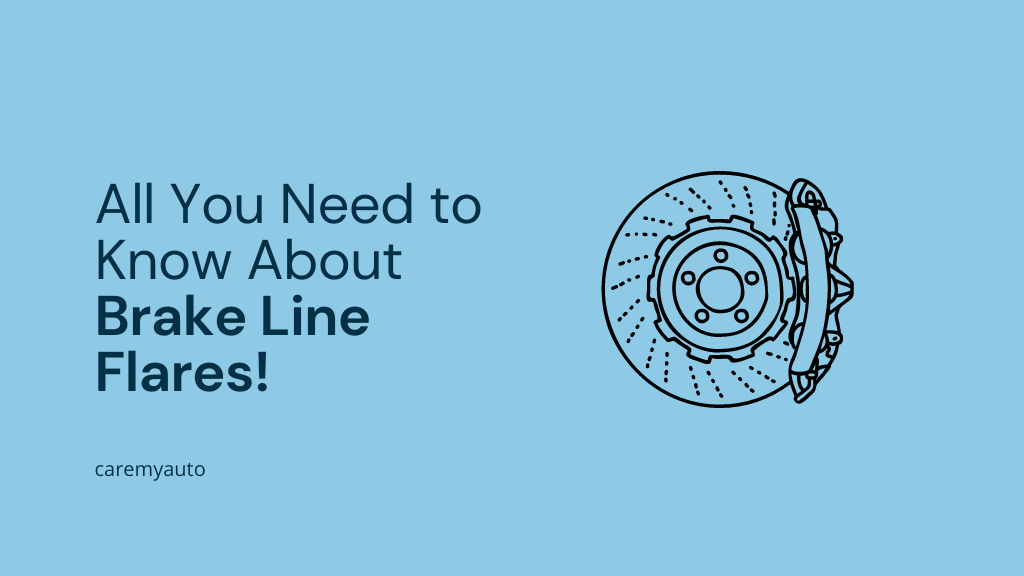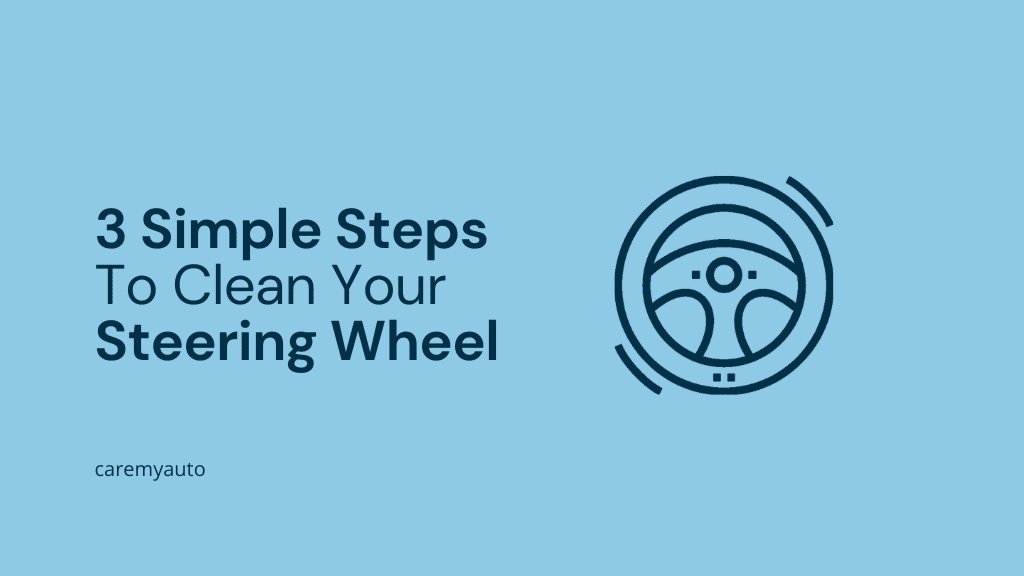It doesn’t matter if you’re here to know what brake line flares are or whether you want to know how to flare brake lines, we’ve got you covered! If you are like most drivers, you likely only think about brake line flares when you need to fix one on your car. But brake line flares are important safety devices, and knowing how to use them is essential for keeping your car safe on the road.
We will not only cover the use of brake line flares and how they work but also list down the steps to double/bubble flare a brake line.
What are brake line flares?
Brake line flares are a type of mechanical fitting used to join sections of tubing in a hydraulic brake system. The flares create a leak-proof seal between the tubing and the fitting and provide a mechanical connection that can withstand the high pressures generated by the brake system.
Brake line flares need to work perfectly because if they don’t, it could result in a fatal accident. They not only improve your braking performance but by creating a seal between the brake line and the caliper, they help to prevent brake fluid from leaking out. This means that your brake pedal will feel firmer, and you’ll have more stopping power.
Brake line flares are typically made from a soft metal, such as aluminum or copper, that can be easily formed into the required shape. The metal is first cut to the correct length, and then a special die is used to form the flare. The die forms a small lip or flange on the end of the tubing, which is then bent over to create the flare.
The most common type of brake line flare is the 45-degree flare, which is used on most passenger vehicles. This type of flare has a small lip that is bent over at a 45-degree angle to create the seal.
Different Types of Brake Line Flares
There are three different types of brake line flares: single, double, and bubble. Each flare has a different purpose and is used in different applications.
Single Flares
Single flares are the most basic type and are typically used for smaller-diameter tubing. They are easy to create and don’t require any special tools, making them a good choice for do-it-yourselfers. However, single flares can be difficult to get a tight seal on, and they are more likely to leak than other types of flares.
Double Flares
Double flares are created by first making a single flare and then adding a second flare on top of it. This creates a stronger seal than a single flare and is less likely to leak. Double flares are typically used for larger-diameter tubing and in applications where a tight seal is critical, such as in automotive brake lines. They are similar to a single flare, but instead of folding the tubing over itself, two small pieces of tubing are inserted into the end of the main tubing. These small pieces of tubing are then flared outwards.
Bubble Flares
Bubble flares are used in applications where space is limited. They are created by flaring the end of a pipe with a bubble-flare tool. Bubble flares are similar to double flares, but the second flare is created by making a small bubble in the tubing before flaring it. This creates an even stronger seal than a double flare and is the preferred type of flare for applications where a leak would be catastrophic, such as in aircraft fuel lines. Hence, these types of flares are often used in situations where very high levels of pressure are present.
The type of flare that is best for your application really depends on the specific requirements of the job. If a tight seal isn’t critical and you’re working with small-diameter tubing, a single flare may be all you need. For larger-diameter tubing or applications where a leak could be damaging, a double or bubble flare would be a better choice.
How to install brake line flares?
As you know already, brake line flares are an important part of your vehicle’s braking system. They ensure that brake fluid can flow freely from the master cylinder to the brakes, and they also prevent brake fluid from leaking out of the system. However, with time, the brake line flares can become damaged and they may need to be replaced. Replacing brake line flares is a relatively easy process, and it can be done at home with a few tools. But, if you’re not confident, it’s always best to go to an expert to ensure that the brake lines are flared properly.
The first step is to remove the old brake line flares. Use a pair of pliers to grip the metal part of the flare and twist it until it comes loose. Once the old flares are removed, clean the area around the brake line with a rag. This will help to ensure that the new flares will seat properly.
Next, take the new brake line flare and insert it into the brake line. Use the pliers to twist the flare until it is tight. Repeat this process for the other side of the brake line.
Once the new flares are in place, you will need to bleed the brakes. This process will remove any air from the braking system, and it will also ensure that the new flares are seated properly. To bleed the brakes, you will need a friend to help you. Have your friend depress the brake pedal while you open the bleeder valve. Once the brake fluid starts to flow, close the bleeder valve and have your friend release the brake pedal. Repeat this process until the brake fluid is free of air bubbles.
Your vehicle’s brake system is now ready to use. Be sure to check the level of brake fluid periodically to ensure that it does not become low.
How to properly maintain your brake line flares?
Brake line flares are an essential part of any car’s braking system, and proper maintenance is essential to keeping your car’s brakes in good working order. Here are some tips on how to properly maintain your brake line flares:
- Check your brake line flares regularly for wear and tear. If you notice any cracks or damage, replace the flares immediately.
- When changing your brake fluid, be sure to bleed the brakes thoroughly to remove any air from the system.
- If you are changing your brake pads, be sure to check the condition of your brake line flares. If they are damaged or worn, they should be replaced.
- When installing new brake line flares, be sure to use the proper tools and torque the flares to the correct specifications.
- Always use quality brake line flares to ensure proper sealing and prevent leaks.
How to double flare a brake line?
We’ve also specified the process to double and bubble flare a brake line, and always remember to consult an expert if you’re doubtful.
Tools Needed:
-Tube cutter
-Flaring tool
-Double flaring tool
-Ratcheting wrench
-Vice
- Use a tube cutter to cut the brake line. If the brake line is steel, you can use a hacksaw. Cut the brake line at a 90-degree angle.
- Use a deburring tool to remove any sharp edges from the brake line.
- Measure the brake line to determine how long the new brake line needs to be. Add 3/4″ to the measurement to account for the flare.
- Use a tube cutter or hacksaw to cut the new brake line. Make sure to cut the brake line at a 90-degree angle.
- Use a deburring tool to remove any sharp edges from the new brake line.
- Slide the new brake line into place. Make sure the brake line is seated properly in the fittings.
- Use a double-flaring tool to flare the brake line. First, flare one end of the brake line. Then, flare the other end of the brake line.
- Pressure test the brake line to make sure there are no leaks.
How to bubble flare a brake line?
Bubble flares are commonly used in automotive brake systems because they provide a secure, leak-proof connection between the brake line and the fitting. The flare “bubbles out” at the end, creating a seal when it is tightened against the fitting. Bubble flares are easy to make and can be done with basic tools.
- Cut the brake line to the desired length with a tubing cutter. Make sure to leave enough room to make the flare.
- Deburr the inside and outside of the brake line with a deburring tool. This will remove any sharp edges that could damage the flare or the fitting.
- Place the brake line in a vise and use a flare tool to flare the end of the tubing. There are different types of flare tools, but the most common is the double-flaring tool. This type of tool has two dies, one for flaring the tubing and one for flaring the nut.
- Assemble the flare tool according to the manufacturer’s instructions. Most tools will require that you place the tubing in the flaring die and then screw the nut onto the die.
- Tighten the nut until it is snug against the tubing. This will flare the tubing outwards, creating the “bubble.”
- Remove the tubing from the flare tool and check the flare to make sure it is even all the way around.
- Screw the brake line fitting into the flared end of the tubing. Use a wrench to tighten the fitting until it is snug.
- Bleed the brakes according to the manufacturer’s instructions. This will remove any air from the line and ensure that the brakes are working properly.
We hope you were able to gain a better understanding of what brake line flares are and how to flare them! If you think we’ve missed any vital steps or would like to correct us, please leave your comments below.



